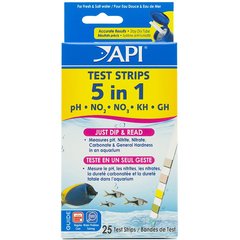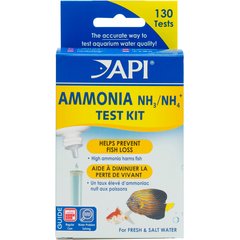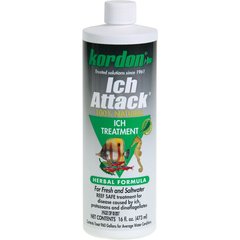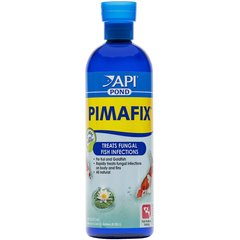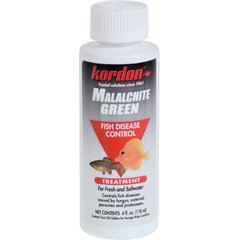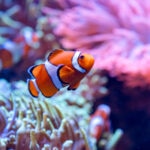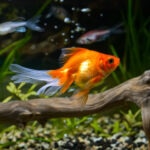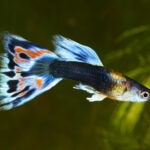How To Treat Red Spot Disease in Fish

Photo by sujesh80/Getty
Many aquarium fish diseases present with physical symptoms—changes to the appearance of the fish or their behavior. Sometimes, even when obvious signs of illness are present, however, it can still be tricky to come to an accurate diagnosis—and even more difficult to determine the appropriate treatment. Case in point: red spot disease.
The term “red spot disease” may refer to either a specific condition or merely a symptom. Making the distinction is essential to successfully treating red spot disease in fish.
Key Takeaways
- Red spot disease is caused by a fungus called Aphanomyces invadans.
- Fish can develop red spots from other sources, too, such as illness, stress, or trauma from tank mates or running into tank decorations.
- Treatment usually involves isolating the sick fish to address the underlying cause.
- Contact a veterinarian if symptoms worsen or don’t improve with treatment.
What Is Red Spot Disease?
Red spot disease (RSD) was first reported in Japan in 1971 among farmed ayu (Plecoglossus altivelis), a species of fish related to smelts. Also known as epizootic ulcerative syndrome (EUS) or mycotic granulomatoses (MG), red spot disease is a fungal infection found in both farmed and wild populations of freshwater fish.
RSD is caused by Aphanomyces invadans, a fungus belonging to the same scientific classification as diatoms and brown algae. The fungus tends to proliferate during periods of low temperature, especially after heavy rainfall. These conditions support the formation of spores of the fungus while low temperatures delay the inflammatory response of affected fish, allowing the infection to spread more quickly.
While the term “red spot disease” originated in reference to this specific fungal infection in farmed and wild fish, red spots in aquarium and pond fish may indicate any number of issues.
According to Dr. Robert Martinez, a certified aquatic veterinarian and owner of Aquatic Veterinary Consulting in the Salt Lake City area of Utah, red spots can indicate anything from superficial skin problems to serious systemic infections. Most commonly, however, red spots are an indication of inflammation that, he says, “is merely the tip of the iceberg for red spot disease.”
Inflammation is often an indication of trauma or can be a sign that your fish is fighting off some kind of illness. In either case, Dr. Martinez says, further investigation is warranted in order to identify the underlying cause of the issue.
Signs Your Fish Has Red Spot Disease
Red spot disease may appear as small pin-sized red dots, larger red patches, or even bloody streaks on the fish’s body or fins. Some fish develop lesions that can develop into open sores or ulcers.
Dr. Martinez offers the following as signs of red spot disease:
- Erythema: A superficial reddening caused by dilation of the capillaries in the skin, often due to injury or irritation.
- Hyperemia: Increased blood flow through the vessels in the skin caused by acute inflammation.
- Ulcers: Open sores or wounds on the external surface of the fish’s body.
- Erosions: Degradation or fraying of the skin and/or fins.
Because red spot disease frequently affects fish who are already stressed or otherwise weakened, secondary infections are common.
In addition to red spots, infected fish may display changes in behavior such as:
- Reduced appetite
- Low activity
- Hiding more than usual
- Gasping for air
- Erratic swimming.
When secondary bacterial infections are present, infected fish may exhibit:
- Fin rotting
- Loss of color
- Bloating
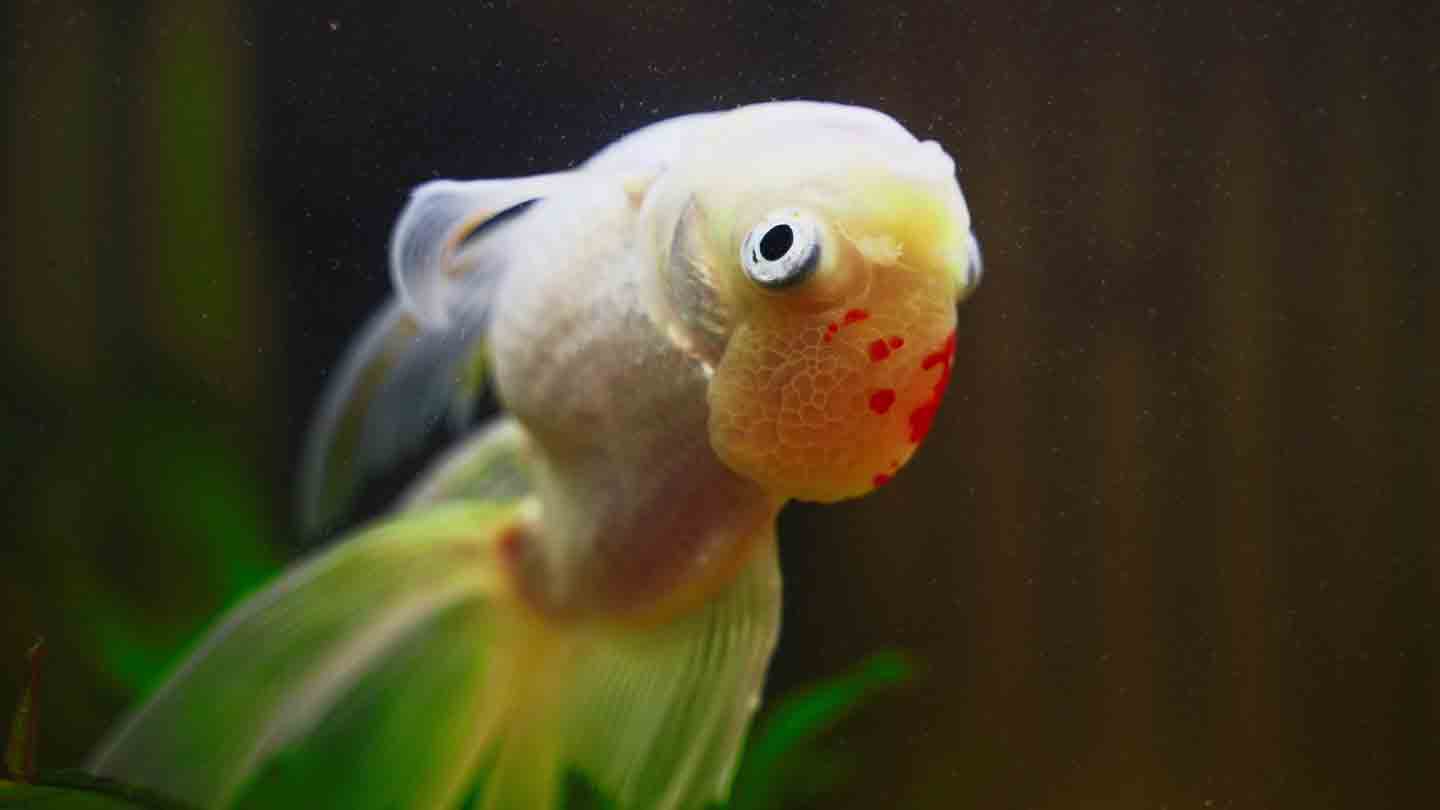
M-Production/Getty
What Causes Red Spot Disease?
Determining the cause of red spots in fish can be tricky, but Dr. Martinez offers a few tricks for narrowing down the underlying issue.
First, determine whether your fish has one single lesion, or if the red spots appear all over their body. That’s an important clue, because a single patch of redness or localized inflammation is typically caused by conditions in the tank. Some of the possibilities include:
- Injuries caused by aggressive tank mates
- Trauma from running into tank surfaces or decorations
- Stress caused by overcrowding
- Inappropriate water quality parameters
Dr. Martinez notes that all of these are potential triggers for stress in aquarium fish. “Stress will lower the fish’s natural defenses,” he says, “and they can become susceptible to disease.”
On the other hand, if your fish has large or widespread areas of redness on their body, it’s more likely they’re suffering from some kind of systemic disease. Examples may include:
- Bacterial infections
- Parasite infestations
- Fungal infections
- A toxicity reaction to high ammonia levels, medications or chemical water treatments.
Bacterial Infections
The most common bacterial infection in fish, according to the Merck Veterinary Manual, is caused by Aeromonas bacteria. In addition to fluid buildup in the abdomen (also known as dropsy), ragged fins and bulging eyes, sick fish often develop bloody spots and ulcers on their body.
The infection can be treated with antibiotics, but laboratory testing is generally required to identify the specific bacterial strain. Goldfish and koi are particularly susceptible to the Aeromonas salmonicida strain.
Another bacterial infection common in goldfish is red pest disease. Caused by Bacterium cyprinicida, this disease causes sick fish to develop red sores and bloody streaks on the body and fins. Fish with red pest disease often display lack of appetite and increased mucus production as well.
Parasite Infections
Parasite outbreaks are common in freshwater aquarium systems where water quality is poor. These are opportunistic organisms that may not bother healthy fish but take advantage when a fish’s immune system has been weakened.
According to the Merck Veterinary Manual, common parasite infections that may cause red spots or inflammation may include:
- Small parasites like Ichthyophthiriusmultifiliis (Ich) and Piscinoodinium (velvet or rust), which appear as tiny white spots or yellow dusting
- Anchor worms, which are much larger and are actually crustaceans, not worms, that burrow into the fish’s skin. Anchor worms cause severe inflammation, and infected fish may further damage their skin by scratching against tank objects in an attempt to relieve pain or itching.
- Flukes, which are tiny external parasites that infect the fish’s gills and skin, triggering the development of red spots, excessive mucus production and respiratory distress. Poor water quality, overcrowding and improper diet are the most common causes of flukes in fish.
- Flatworms like Gyrodactylus and Dactylogyrus, which are more likely to affect goldfish, koi and other pond fish. Similar to flukes, flatworms infect the skin and gills. Infected fish often lose color and develop ulcers and hemorrhages that can quickly become fatal.
Fungal Infections
Fungal spores are common in freshwater aquariums, even those that are well-kept. Like parasites, however, they can colonize quickly when fish are stressed or sick. Many fungal infections present with fluffy white growths but, as they progress, can take on a gray or red appearance.
Though fungal infections don’t always cause red spots, they tend to colonize areas of the fish’s body that have already been damaged by previous infection or injury. This may result in inflammation and, if the infection spreads to the internal organs and systems, could contribute to bleeding or ulcerations.
Toxins
When no signs of bacterial, parasite or fungal infection are present, other causes must be explored. Red spots or patches, especially when accompanied by inflammation, may indicate a problem with conditions in the fish tank. Something in the water could be poisoning your fish.
Ammonia toxicity typically presents with inflammation and hemorrhaging around the gills. Damage to the gills prevents the fish from absorbing oxygen from the water, which contributes to further breakdown in the body. Along with redness around the gills, fish with ammonia poisoning often exhibit a pronounced gasping behavior.
Tropical fish and pond fish can also be poisoned by the overuse of medications or exposure to everyday chemicals, such as cleaning products. In some cases, it may be the combination of multiple factors that causes the problem.
For example, you might use liquid medication or medicated fish food to treat any number of health problems. If you use too much medication, however, or fail to remove the excess medication from the water column after the issue has been resolved, you might create a new set of issues.
Overuse of medication and chemical water treatments can kill the beneficial bacteria in your tank. Without a thriving biological filter, ammonia levels may start to rise. This can lead to damage of the fish’s protective slime coat, which may then develop into pink or red splotches of ammonia burn.
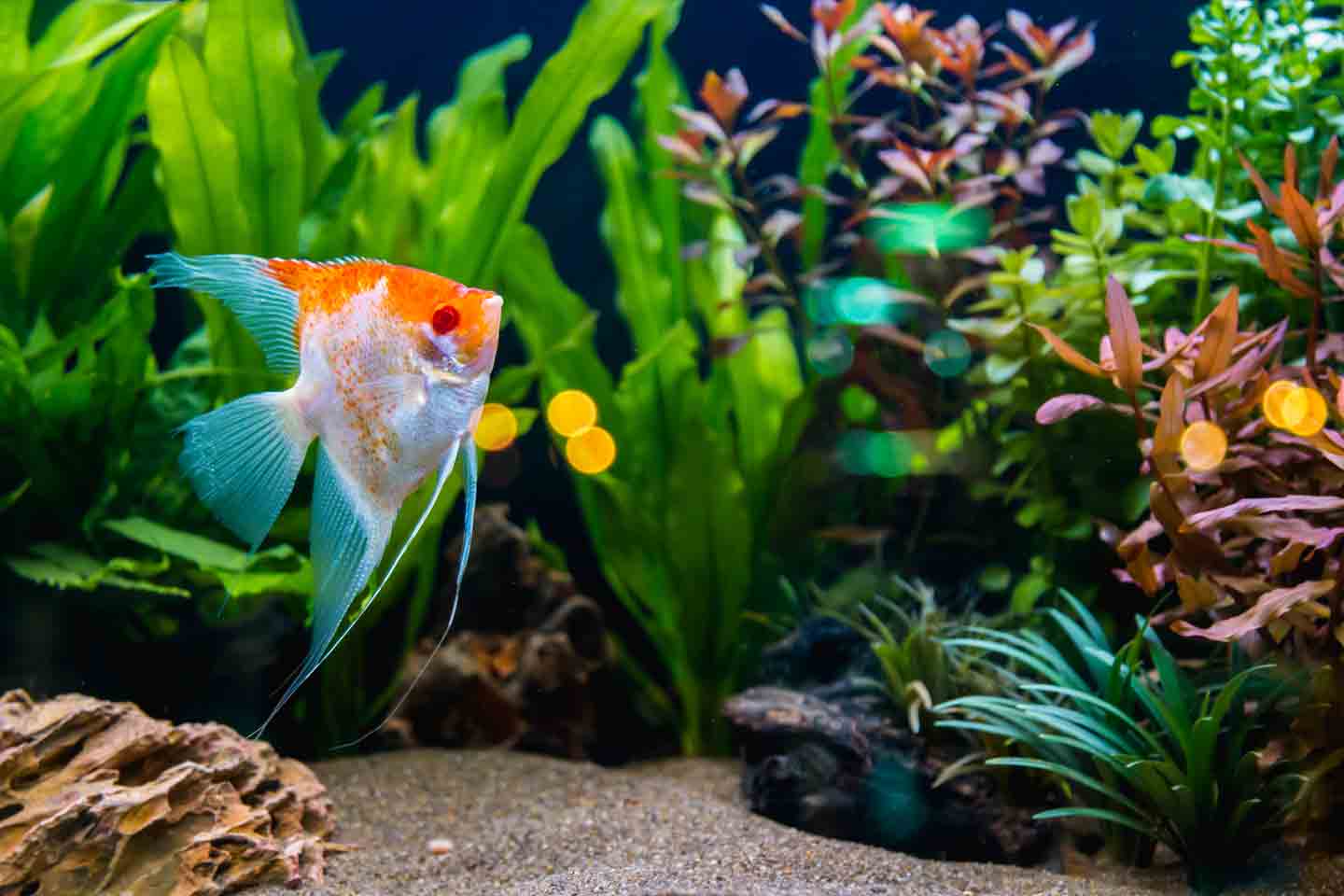
rookiephoto19/Getty
Diagnosing Red Spot Disease
Before you can determine how to treat red spot disease in fish, it’s essential to identify the underlying issue. With so many potential causes, however, this step can be difficult. It may be a matter of ruling things out to narrow down the list of possibilities.
Dr. Martinez recommends taking the following steps:
- Determine whether the condition affects one or multiple fish.
- Visually assess the red spots, taking note of their size, shape and number.
- Look for other signs that might indicate trauma (such as aggressive tank mates, sharp decorations or torn fins).
- Observe the affected fish to identify any unusual behavior (like reduced appetite or flashing against tank objects).
- Perform a water quality test to identify potential problems with tank parameters.
Taking these steps will help you determine whether the red spots are related to a husbandry issue (a problem in their care or living conditions) or to a systemic disease that requires treatment.
In the case of systemic disease, it’s wise to consult an aquatic veterinarian. Accurate diagnosis is essential for successful treatment, and a vet should be able to help narrow down the possibilities, especially among conditions with overlapping symptoms.
How To Treat Red Spot Disease in Fish
In many cases, the first step in treating aquarium fish disease is to isolate the affected fish. When red spots are caused by underlying infection, removing the sick fish to a quarantine tank not only helps prevent the spread of the disease to other fish but makes the task of treatment simpler. However, this only works if a single fish is infected—if multiple fish are sick, it may be necessary to treat the entire tank.
If you’re able to determine that tank conditions are the root cause of the issue, Dr. Martinez says that “once the water quality parameters are corrected and any other issues are addressed, we would expect the fish to heal with minimal issues.”
In cases of systemic disease, however, treatment might not be so obvious. Dr. Martinez recommends contacting an aquatic veterinarian. Appropriate treatment will depend on the cause of the disease and may also help address any secondary infection.
Treatment of systemic infections is twofold: In addition to identifying the cause to determine the appropriate treatment, Dr. Martinez stresses the importance of appropriate wound care. Water changes to maintain high water quality may be necessary and, in some cases, adding aquarium salt may help heal wounds.
Fixing Inappropriate Tank Conditions
Poor water quality is a common cause of red spots in fish—a quick test of your aquarium water chemistry should reveal whether this is the case. Both ammonia and nitrite levels should be as close to zero as possible. Some nitrates are to be expected in an established aquarium but should be managed with regular water changes.
Recommended Products
If your ammonia or nitrite levels are too high, perform a 25 percent water change once a day, testing the water every 24 hours until the levels normalize. Find out more about how to clean your fish tank.
To prevent the issue from recurring, make sure you have adequate filtration in place and closely monitor tank conditions, including water temperature. Weekly tests of your tank water will reveal changing conditions that could lead to poor water quality that might negatively affect your fish.
If water quality isn’t an issue, consider whether your fish might be stressed or injured by other fish or decorations in the tank. Aggressive species like betta fish and cichlids may harass fish that look similar to them—especially when multiple males are kept together. You may need to separate the fish or redecorate the tank to create individual territories and break up sightlines.
Observe your fish to determine whether they’re being injured by aquarium decorations and remove those decorations, if so.
Treating Bacterial Infections
Treating bacterial causes of red spots in fish can be tricky. Antibiotic medications are generally the best option, but it’s important to tailor the treatment to the specific strain of bacteria. This is where an aquatic veterinarian comes in—they’ll be able to perform the necessary tests to determine which bacteria you’re dealing with and recommend a treatment.
Dr. Martinez cautions against purchasing over-the-counter antibiotics to treat red spot disease in fish. “These products aren’t checked for potency and efficacy,” he says, “and if the dose is inappropriate, it could lead to antibiotic resistance.”
Treating Parasite Infections
For Ich and other infections of small parasites, there are several over-the-counter treatment options. For larger parasites, praziquantel is a preferred treatment and can generally be added directly to the tank.
When treating parasite infections, time is an essential element. Some treatments will kill only the larval form of the parasite, so repeated treatments may be required until the remaining adults die off and stop reproducing.
Fish recovering from parasite infections are extremely susceptible to secondary bacterial and fungal infections, so it’s important to maintain optimal water conditions throughout treatment. Take steps to minimize stress as well, quarantining sick fish if needed.
Recommended Products
Treating Fungal Infections
Malachite green is a common treatment for fungal infections in aquarium fish, though it is sometimes used for external parasites and protozoan infections as well. It can be administered at a concentration of 1 teaspoon (about 5ml) per 10 gallons of water.
Again, separating infected fish may be required to prevent the spread of the disease to healthy fish. When treating fungal infections in a hospital tank, it’s wise to perform 25 percent water changes every 24 hours before retreatment to prevent overdosing.
Recommended Products
What To Do After Treatment
If you’re able to successfully treat red spot disease with medication, be sure to remove the excess medication from your tank once your fish have recovered. Water changes are helpful but activated carbon filter media, like this one from Sungrow, may be the quickest option.
After releasing fish from quarantine, be sure to thoroughly clean and sterilize their temporary tank (aka the “hospital tank”) and prepare it for future use.
